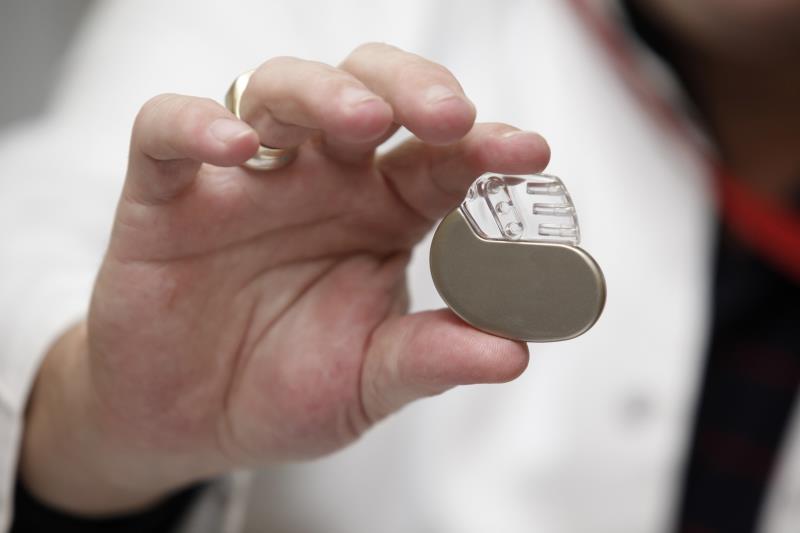Antibacterial envelopes help ward off major CIED infections





An antibacterial envelope (AE) may be an effective strategy in reducing the risk of infections associated with cardiovascular implantable electronic devices (CIEDs) in high-risk patients, according to a recent meta-analysis.
“Our study reveals a statistically significant reduction in the odds of major CIED infection in high-risk patients with the use of AE-CIED compared to conventional CIED,” researchers said. “However, well-conducted randomized controlled trials with long-term follow-up are needed to validate these findings.”
After applying the selection criteria, six studies were deemed eligible for analysis and included in the final review. This corresponded to a pooled sample of 11,897 patients, of whom 5,844 received AE-CIED, while the rest were given conventional CIEDs. The main outcome measured in all studies was the risk of major CIED infection following device upgrade or replacement. [Int J Cardiol 2020;315:51-56]
Pooled analysis of the combined cohort showed that AE-CIED reduced the risk of major infections in high-risk patients by 66 percent (odds ratio [OR], 0.34, 95 percent confidence interval [CI], 0.13–0.86; p=0.02). The resulting number needed to treat (NNT) value was 98. Heterogeneity of the evidence was significant (p=0.01).
After propensity matching, the protective effect of AE-CIED against major infections only improved, decreasing the risk by 71 percent (OR, 0.29, 95 percent CI, 0.10–0.82; p=0.02). Heterogeneity was moderate but nonsignificant (p=0.12).
Moreover, restricting analysis to only retrospective studies further increased the efficacy of AE-CIED, which showed an 82-percent reduction in the risk of major infections (OR, 0.18, 95 percent CI, 0.06–0.54; p=0.002). In this sub-analysis, no heterogeneity was reported.
Stratifying according to the length of follow-up also uncovered important differences. At the 6-month follow-up, AE-CIEDs reduced the risk of major infection by around 77 percent. By month 12, this further dropped to 59 percent.
This “might suggest that antibacterial envelope is more effective in the prevention of early infection and the efficacy decreases over time,” the researchers said.
In terms of outcomes, four studies assessed the effect of major CIED infections on mortality. In the pooled analysis, 175 deaths were reported in the AE-CIED group at 6–12 months after the index procedure, as opposed to 240 in the conventional CIED arm. The resulting risk estimate showed a nominal, nonsignificant advantage of AE-CIED (OR, 0.55, 95 percent CI, 0.16–1.91; p=0.34).
“Based on the available data, both absorbable and nonabsorbable antibacterial envelope CIED seem to be associated with lower relative odds of major CIED infection in high-risk patients,” the researchers said.
However, the present meta-analysis also revealed a relatively shallow literature pool about the subject. The included studies were heterogenous in terms of study design, control measures, and follow-up durations.
“An influential analysis to evaluate the predictive factors of infections based on the comorbidities and subgroup analysis based on the components of major infection could not be performed due to insufficient data,” the researchers said. “It is also possible that long-term use of these devices can potentially induce antibiotic resistance.”
“Further independent studies with randomized control groups, followed for a longer follow-up duration, are needed to assess the real merits of antibacterial enveloped CIEDs in the context of its cost-effectiveness in both low- and high-risk patients,” they added.